Natural Solutions to Things That Bug You (25 page)
Read Natural Solutions to Things That Bug You Online
Authors: Myles Bader

ASH/LILAC BORER
Identification:
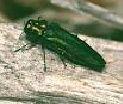 The ash borer belongs to the group of insects called the clear-winged moths. However, these moths fly during the day, not at night. They have slender bodies that are yellow to brownish-black. The wingspan is about 1-inches and the females are larger than the males. Their larvae, does the damage.
The ash borer belongs to the group of insects called the clear-winged moths. However, these moths fly during the day, not at night. They have slender bodies that are yellow to brownish-black. The wingspan is about 1-inches and the females are larger than the males. Their larvae, does the damage.
General Information:
These bugs tunnel into the trunk of ash trees usually at ground level or below ground. The tunnels can be 12-inches long and up to 1/3 inches wide. They can cause extensive damage to the tree and even kill the tree.

To reduce the infestation it is sometimes necessary to remove the section or limb of the tree where the infestation is taking place. All methods of control for any borer will be viable for these ash borers. If left alone they can kill a tree!
CLEAR THE WAY
If you keep the ground around the trees clear of any grass or weeds the birds will be able to spot the bugs and handle the problem very efficiently. However, pheromone traps are one of the preferred methods of control.
EUROPEAN CORN BORER
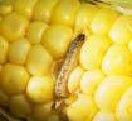
Identification:
They are about 1 inch long, gray-pink in color with brown spots. They bore holes in corn and a variety of grasses. Check the underneath side of leaves for their egg masses.
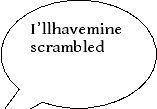
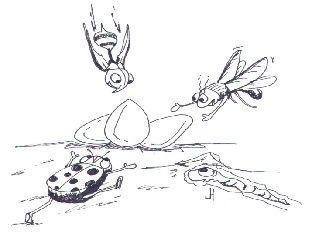
GETTING CONTROL
The eggs can be attacked by ladybugs, lacewings and trichogramma. If there is a bad infestation and the holes are in the corn, it would be best to spray the corn with Nc nematodes or they will enter the stalk and kill the entire corn stalk. As a preventive measure if you feel that the problem is going to occur, spray the corn with Bt. You can also cut a hole and physically remove the borer.

LESSER CORN STALK BORERS
Identification:
 These are green, brown or blue-banded caterpillars that will tunnel into corn stems. The caterpillar will exit the stalk through a silken web that resembles a tunnel and pupates in the soil. The adult moth has a wingspan of about 1-inch.
These are green, brown or blue-banded caterpillars that will tunnel into corn stems. The caterpillar will exit the stalk through a silken web that resembles a tunnel and pupates in the soil. The adult moth has a wingspan of about 1-inch.
The male’s front wings are a yellowish-brown with gray margins. The female’s front wings are almost all black.
General Information:
The caterpillars tend to prefer the southern United States cornfields. Georgia, Alabama and South Carolina are the favorite states for the lesser corn borers; however, they can be found from Maine to Georgia. Mexico and Central America has also had a problem. Even though they prefer corn, they will feed on many other plants if the corn is not available.
GET OUT THE SYRINGE
Many farmers prefer to inject Nc nematodes into the boreholes. However, a number of farmers will make a small cut near the borehole and physically remove the pest screaming and kicking. Keep a bucket of soapy water with you if you decide to remove them.
BEFORE THEY SET UP HOUSEKEEPING
Prevention is always the best method of control. Spraying the field with a solution of Bt or NVP will solve the problem.
POKE ‘EM
If you find their holes, just poke a stiff wire into the hole to kill them.
POUND THEM ROOTS
Crush up 2 pounds of French marigold roots and place them in 2 quarts of water. Allow to soak for 1 hour, strain and place in sprayer and spray on infested soil.
 LIMA BEAN POD BORER
LIMA BEAN POD BORER
Identification:
This is green or reddish caterpillar with a light yellow head that prefers the southern United States. It grows to about one inch long and will wriggle violently when bothered.
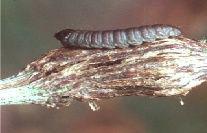
General Information:
This bug will pierce through the Lima bean pod and eat the seeds. It has the tendency to pass from one bean to another and has the tendency to destroy beans even if it is not hungry. When it does finish eating it will enter the ground to pupate.
PICK’EM UP
 The best method to eradicate these pests is to handpick them from the plants before they do too much damage. If the crop is planted late they will do more damage than they will to an early, planted crop. If you do plant early you may avoid the pest all together.
The best method to eradicate these pests is to handpick them from the plants before they do too much damage. If the crop is planted late they will do more damage than they will to an early, planted crop. If you do plant early you may avoid the pest all together.
